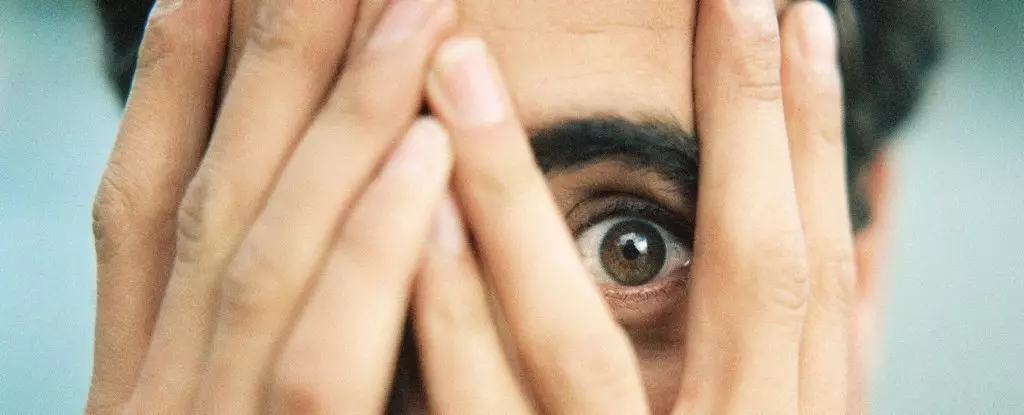In a world saturated with sensory stimuli, the simple act of observing someone fidgeting may seem trivial—yet for a significant portion of the population, it triggers an intense emotional response. This phenomenon, known as misokinesia, exposes just how deeply the nuances of human perception and emotional regulation are intertwined. Despite its prevalence, misokinesia remains under-explored and poorly understood, highlighting a critical gap in psychological and neurological research. Its identification challenges us to reconsider the social and mental toll that seemingly mundane behaviors can impose on individuals.
From annoyance to outright distress, the reactions elicited by visible repetitive movements aren’t just superficial; they can influence emotional well-being, social participation, and even workplace productivity. The recognition of misokinesia pushes us to confront difficulties faced by people who may feel alienated or overwhelmed when they encounter ordinary behaviors such as tapping feet or drumming fingers—behaviors many dismiss as inconsequential. Yet, for those affected, these stimuli are anything but trivial, offering a stark reminder that human sensory thresholds are highly individualized and often unpredictable.
A Closer Look at the Research and Its Implications
Recent scientific endeavors, notably those led by psychologist Sumeet Jaswal, have begun mapping the contours of misokinesia. Their large-scale studies, involving thousands of participants, reveal that discomfort from fidgeting is more common than previously believed, affecting nearly a third of the population to some degree. Such findings are revelatory because they dismantle the misconception that this sensitivity is strictly pathological or confined to clinical diagnoses. Instead, misokinesia appears to be a broad, human experience—one that layers emotional complexity onto everyday social interactions.
What is particularly striking is the variability in individuals’ responses. Some people barely notice or are mildly annoyed by fidgeting, while others find it profoundly disturbing—an emotional reaction that can ripple outward, impairing social enjoyment and participation. This sensitivity often manifests as frustration, anxiety, or anger, compounding existing social barriers or mental health struggles. It warns us that minor behaviors, often dismissed as harmless or merely distracting, might be catalysts for significant emotional distress for many. Recognizing misokinesia as a widespread challenge compels us to foster more inclusive and empathetic social environments.
The Brain, Empathy, and the Roots of Discomfort
While the exact cognitive origins of misokinesia remain elusive, emerging hypotheses hint at complex neural mechanisms. One intriguing theory involves mirror neurons—specialized brain cells that activate both when we perform an action and when we observe others doing the same. These neurons support empathy, imitation, and social understanding, but in the context of misokinesia, they may inadvertently reinforce discomfort.
Suppose that when a person with misokinesia sees someone fidgeting, their mirror neurons stimulate an involuntary empathic response—perhaps heightened anxiety or even a subconscious hyper-awareness of movement. This could create a feedback loop, intensifying feelings of irritation or distress. Additionally, some researchers speculate that individuals with misokinesia struggle to disengage from the visual stimulus, meaning they find it difficult to “look away” mentally and emotionally. This inability to filter out distraction points toward an underlying attentional control issue, although conclusive evidence is still pending.
What’s compelling about these theories is their potential to bridge understanding between sensory sensitivity and emotional regulation. If misokinesia stems from neural hyperconnectivity or heightened mirror neuron activity, it invites us to look beyond surface behaviors and delve into the neural architecture that shapes perception, empathy, and discomfort. Such insights could overhaul how we approach social interactions, behavior management, and mental health treatment, recognizing that these reactions are rooted not solely in personality quirks but in intricate brain processes.
Beyond the Surface: Why Recognizing Misokinesia Matters
Acknowledging misokinesia as a genuine and prevalent phenomenon has profound societal implications. It urges us to consider the emotional and psychological landscapes of others with greater compassion, especially in environments where repetitive behaviors are frequent, such as classrooms, offices, or social gatherings. For individuals who experience distress from fidgeting, mainstream settings often lack sensitivity or accommodations, resulting in alienation, withdrawal, and diminished well-being.
Furthermore, this awareness challenges us to see familiar behaviors in a new light. Fidgeting, often dismissed as nervousness or idle habit, may serve as a source of significant discomfort for others. Recognizing this encourages a shift toward more inclusive behaviors—such as creating designated quiet zones or fostering understanding that some behaviors are more than mere distractions—they are triggers that can undermine mental health.
From a clinical perspective, research on misokinesia could pave the way for targeted interventions. Cognitive-behavioral strategies, mindfulness practices, or environmental modifications might help mitigate reactions for those profoundly affected. This paradigm shift underscores that understanding and empathy are vital components in nurturing healthier social spaces, especially in a world still grappling with the invisible burdens carried by so many.
In the end, the exploration of misokinesia illuminates a broader truth: humans are complex, multi-faceted beings whose perceptions and reactions are shaped by a web of neural, psychological, and social factors. Recognizing the depth and breadth of sensitivities like misokinesia not only enriches our understanding of individual differences but also compels us to create a more empathetic society—one where even the smallest movements are understood and respected.

